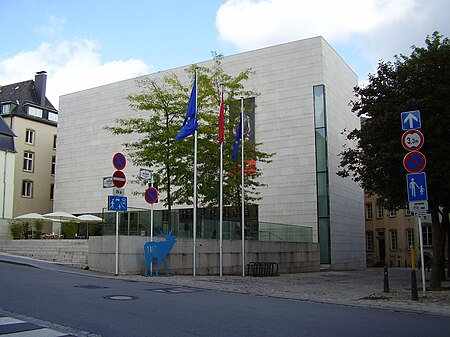National Museum of History and Art
Art museums and galleries in LuxembourgConvention centres in LuxembourgEuropean art museum and gallery stubsHistory museums in LuxembourgLuxembourgian building and structure stubs ... and 2 more
Museums in Luxembourg CityNational museums of Luxembourg

The National Museum of History and Art (Luxembourgish: Nationalmusée fir Geschicht a Konscht, French: Musée national d'histoire et d'art, German: Nationalmuseum für Geschichte und Kunst), abbreviated to MNHA, is a museum located in Luxembourg City, in southern Luxembourg. It is dedicated to displaying artworks and artefacts from all epochs of Luxembourg history. The museum is situated in Fishmarket, the historic heart of the city, in the Ville Haute quarter.
Excerpt from the Wikipedia article National Museum of History and Art (License: CC BY-SA 3.0, Authors, Images).National Museum of History and Art
Rue Notre-Dame, Luxembourg Ville-Haute
Geographical coordinates (GPS) Address Website Nearby Places Show on map
Geographical coordinates (GPS)
| Latitude | Longitude |
|---|---|
| N 49.611944444444 ° | E 6.1330555555556 ° |
Address
Luxembourg City: Old Quarters & Fortifications
Rue Notre-Dame
1144 Luxembourg, Ville-Haute
Luxembourg
Open on Google Maps










